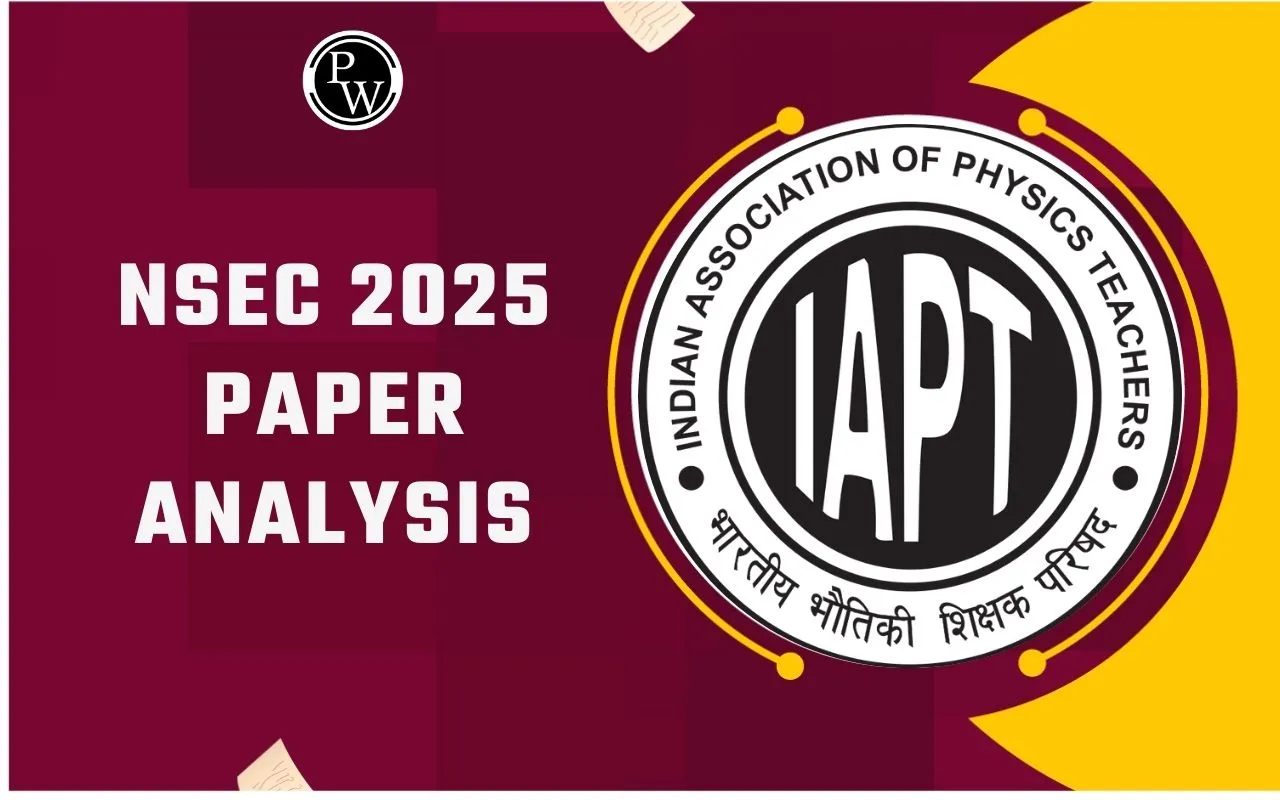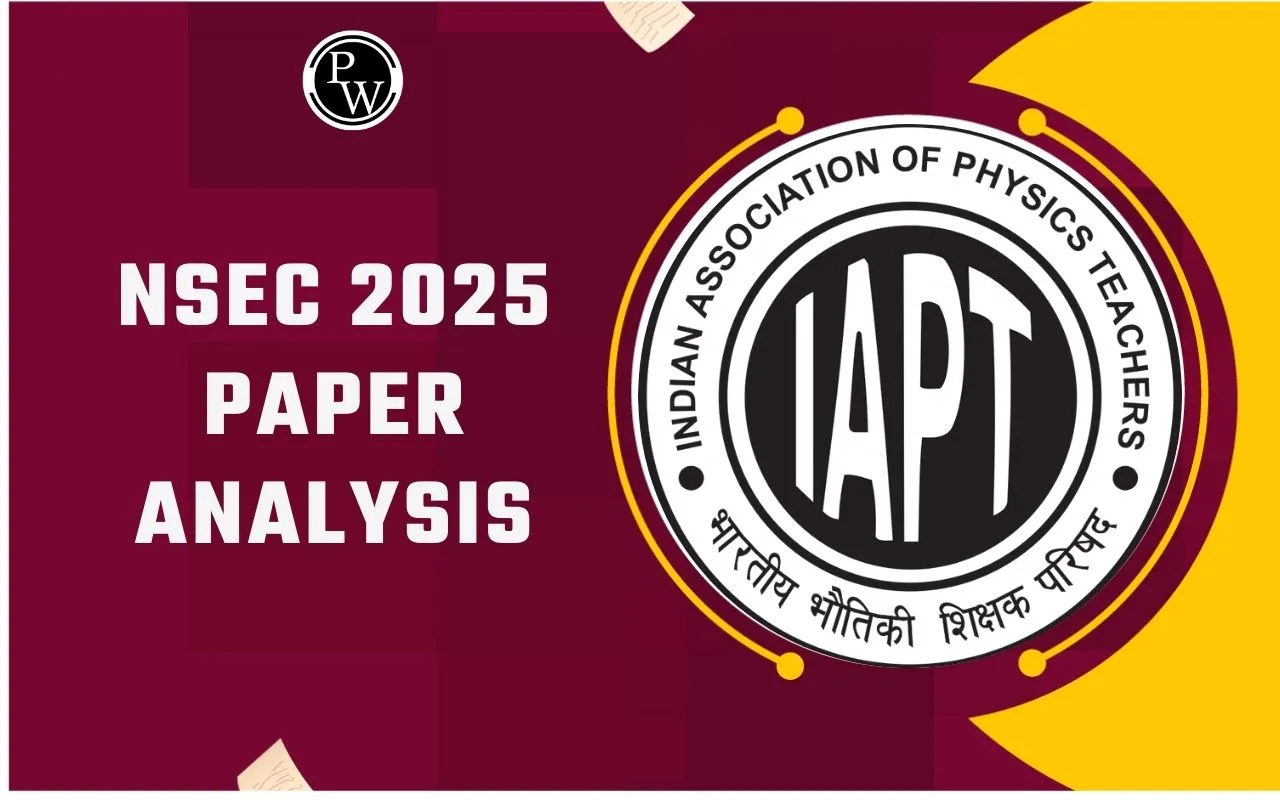

NSEC 2025 Paper Analysis: The National Standard Examination in Chemistry (NSEC) has been conducted on 23rd November 2025. The paper has been divided into sections of Set A consists of 48 questions. Then, there is Set B consists of 12 questions. NSEC 2025 Paper Analysis helps candidates to know the paper level, attempt strategy, and solutions. The PW Olympiad Team has prepared the paper analysis considering the student feedback who took the exam.
Also Read:
NSEC 2025 Paper Analysis Overview
NSEC 2025 consists of 60 questions to attempt in 2 hours. The exam has been organised on 23rd November 2025. NSEC 2025 Paper Analysis gives an overview of the exam.
|
NSEC 2025 Paper Analysis Overview |
|
|
Exam Name |
National Standard Examination in Chemistry (NSEC) 2025 |
|
Exam Date |
23rd November 2025 |
|
Exam Pattern / Format |
- 60 questions - Two sections: • Set A: 48 MCQs (single correct) • Set B: 12 MCQs (multiple correct) |
|
Duration |
2 Hours |
|
Total Questions |
60 Questions |
|
Medium |
English / Hindi |
|
Marking Scheme |
- Set A: +3 marks for correct, -1 for wrong answer - Set B: +6 marks for correct, no negative marking |
NSEC 2025 Paper Analysis: Difficulty Level
NSEC 2025 paper level is moderate to difficult. The questions covered in the paper, as per the NSEC 2025 Paper Analysis based on Physical Chemistry, Organic, and Inorganic Chemistry.
-
Physical Chemistry-based questions covered the numerical-based type of questions.
-
Organic Chemistry section compiled the reaction mechanism type questions.
-
Inorganic Chemistry covered the conceptual and fact-based questions in the paper.
NSEC Paper Analysis Watch Video
Candidates can watch the NSEC Paper Analysis video. It can help them get the detailed solutions to the questions asked in the exam.
NSEC 2025 Paper Analysis: Topic-Wise Weightage
Physical, Organic, and Inorganic-based questions are asked in the paper. The topic-wise weightage for the three sections is provided for the candidates' understanding, to prepare for NSEC in the future.
Physical Chemistry Topics
-
Equilibrium (Chemical and Ionic)
-
Chemical Thermodynamics
-
Electrochemistry
-
Atomic Structure
-
Chemical Kinetics
Organic Chemistry Topics
-
Aldehydes, Ketones & Carboxylic Acids
-
General Organic Chemistry (GOC) & Basic Principles
-
Hydrocarbons (Alkanes, Alkenes, Alkynes)
-
Haloalkanes and Haloarenes
-
Alcohols, Phenols & Ethers
-
Amines
Inorganic Chemisry Topics
-
Chemical Bonding & Molecular Structure
-
Coordination Compounds
-
p-Block Elements
-
d- and f-Block Elements
-
Periodic Table & Periodicity
-
Qualitative Analysis
